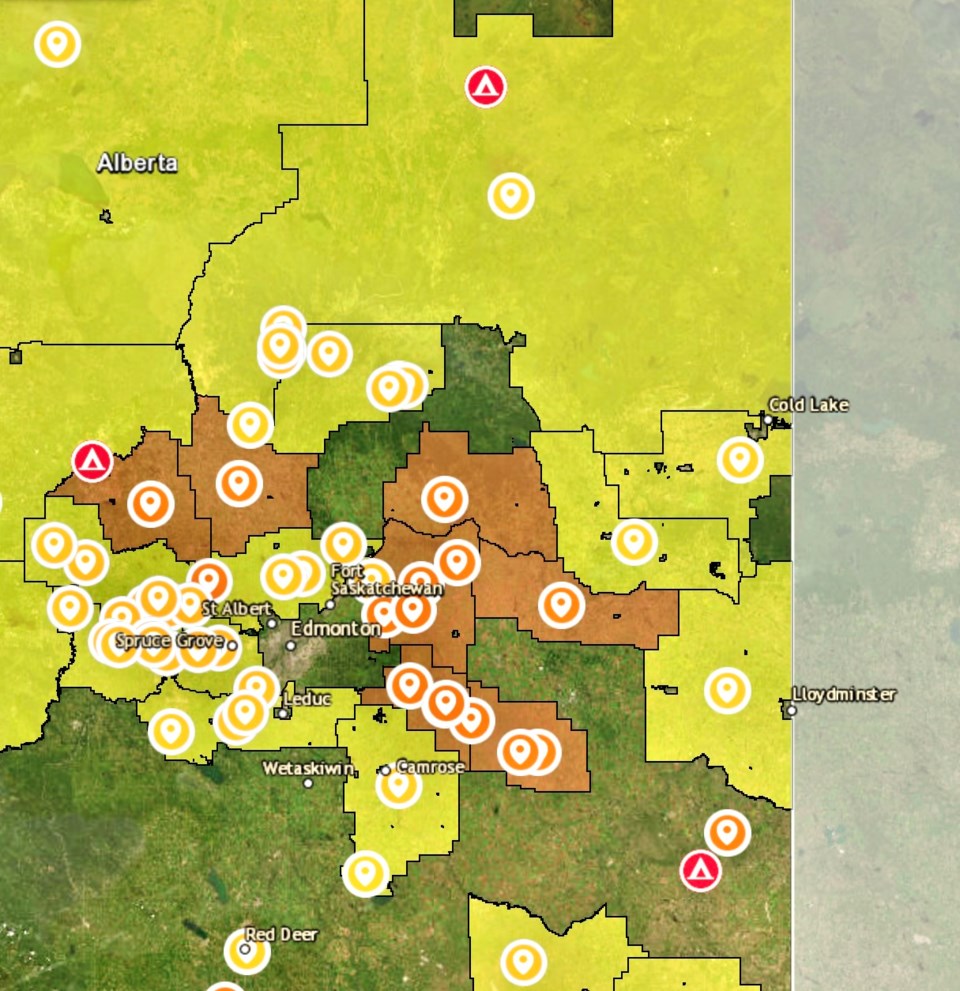LAKELAND – Fire and safety officials across the Lakeland are reminding people that the majority of wildfires are caused by humans, and with the mixture of dry conditions and elevated winds, exercising caution is vital in preventing the spread of fires.
As of April 17, the MD of Bonnyville, the Lac La Biche Forest Area, and the County of St. Paul all have fire advisories in place.
Also, the surrounding communities of Smoky Lake County and Two Hills County are under fire restrictions.
According to Alberta Fire Bans, areas with a fire advisory have ceased the issuing of new burn permits, but existing permits remain valid. Recreational fires such as campfires are still permitted but residents should confirm they are extinguished entirely.
Regional Deputy Chief Joe Bruyere from the Bonnyville Regional Fire Association (BRFA) explains that the organization aligns itself with the fire advisories, bans, and cautions put out by the Alberta Ministery of Forestry and Parks, saying he trusts the educated calls of the Forestry staff.
Bruyere missed Lakland This Week’s first phone call, as he was out dealing with a human caused ground fire.
“I have been to four groundfires, or wildland fires, already this year. Today was the fourth. Only one was of natural causes, but everything else was human related,” said Bruyere.
St. Paul Fire Chief Trevor Kotowich said St. Paul Fire Department has also already responded to some human-caused fires, and that they aren’t in the right season to see naturally occurring fires, such as those from lightning strikes, though “nothing is out of the realm of possibility anymore.”
Bruyere explained that the wind contributes to drying and can accelerate fires.
“We are low on moisture right now . . . the fire today moved at a decent rate. We held the fire to under an acre, which is good. We had a great response time and put it out quickly, but it had the potential to get really very large, especially in these winds,” said Bruyere.
He said it’s common for people to have a burn pile they believe to be extinguished, reignite and cause a fire.
“One of the fires this year was caused by someone who had burned two weeks ago, and unfortunately in the higher winds it kicked back up and spread. So, the big thing is to watch all fires, including historical fires. If you’ve burned in the last few weeks make sure you keep checking – especially with big log pile burns,” said Bruyere.
Mark Wiebe, Deputy Chief of Safety and Logistics for Lac La Biche County, said that around 70 per cent of fires are caused by humans, and the slight increase in moisture level this year, in comparison to the last few years, is not enough mitigate the risk.
“We did get a bit more snow this year, and some heavier spring snow, which is beneficial, but when you talk about the drought code, the moisture levels in the soil, it takes a lot of moisture to bring it up from multiple years of super dry weather conditions. I think this year will be better than past years, but we’re not out of the woods. We could certainly use some good spring rains,” said Wiebe.
Kotowich said they also commonly find that people’s burn piles, or barrel fires cause issues, especially when burning on windy days.
“One spark could ruin somebody’s day,” said Kotowich.
All parties encourage vigilance with any fire and remind people that fires can seem extinguished and still harbour enough of an ember to cause a serious fire.
John Kokotilo, the regional fire chief for Lac La Biche County, also encourages people to check previous burning sites, and that caution should be exercised during windy conditions. During the fire advisory, he added, small, safe cooking and warming fires (campfires) are permitted.
Kokotilo also acknowledged the weather will play a big factor in mitigating fire risks.
“If we get the spring rains it will help immensely . . . if not, the high winds we have been experiencing along with increase in temperatures could prove a challenge for us," said Kokotilo.
And while everyone should be careful when dealing with fire, Kotowich notes that campfires, when done safely, are not considered a concern at the moment.
“Safe campfires in a non-combustible pit, whether it be a steel or concrete type of pit, very seldom, if ever, cause us any issues,” said Kotowich.
To keep up to date with fire advisories and restrictions, visit albertafirebans.ca or contact your local municipality.
*With files from Chris McGarry



